I guess that most people think that the city walls that make Lucca famous all over the world were of medieval origin. But I recently discovered, during a guided tour exploring the walls of Lucca and its underground, that this belief is partially wrong.
How to book a tour of the walls of Lucca
We have to thank a friend who suggested booking this unusual tour created by Turislucca. Turislucca is a group of experienced authorized tour guides with a great knowledge of the town. They know Lucca so much and they tell you tons of interesting facts about the history of their hometown. A must to do in town is a bike ride along the wide and shady path of the fortification that surrounds the old center Instead, the majority of tourists don’t know that the main bastions hide ancient underground and that you can discover them.
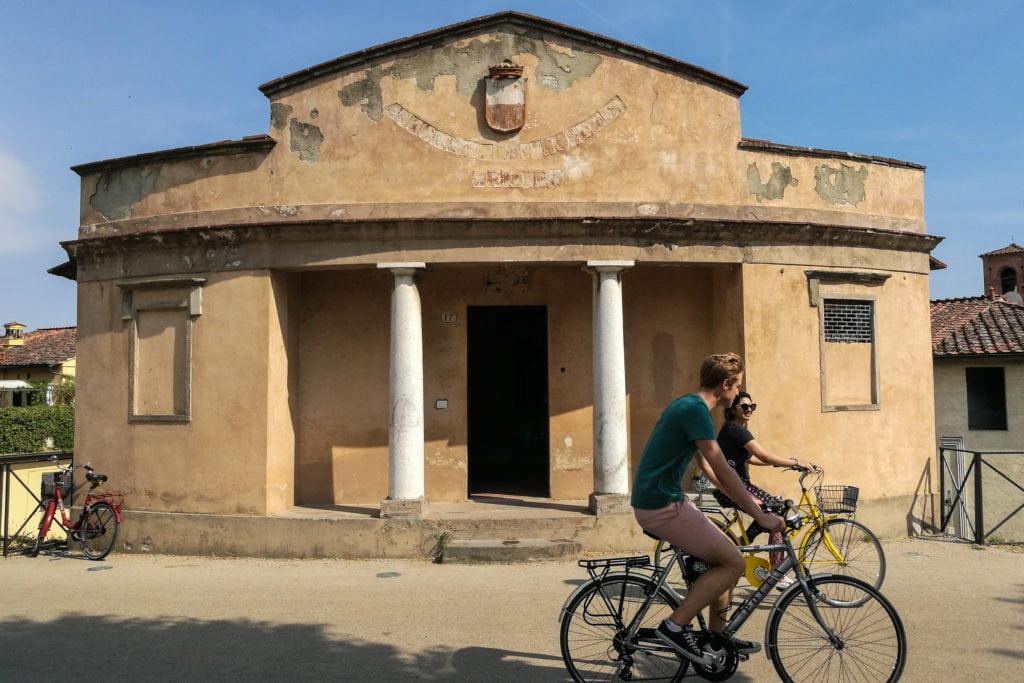
Stories of castles, fortresses, and knights always fascinated me. So the idea to explore the underground walls of Lucca made me very excited.
We booked the tour a few days in advance. There are only two or three walking tours of the underground every month and they usually have a huge success. Anyway, someone bought the ticket on-site the day of the visit. So give it a try even if you decide at the last minute. Most of the participants were Italians but the tour is available even in English.
The meeting point of the tour is at the tourist office of Piazzale Verdi. Before starting, they make small groups to make the visit more enjoyable. They also provide all the visitors with a useful map of the town showing how it changed with time. And the walls with it. After that, the tour into the history of Lucca and its wall begins.
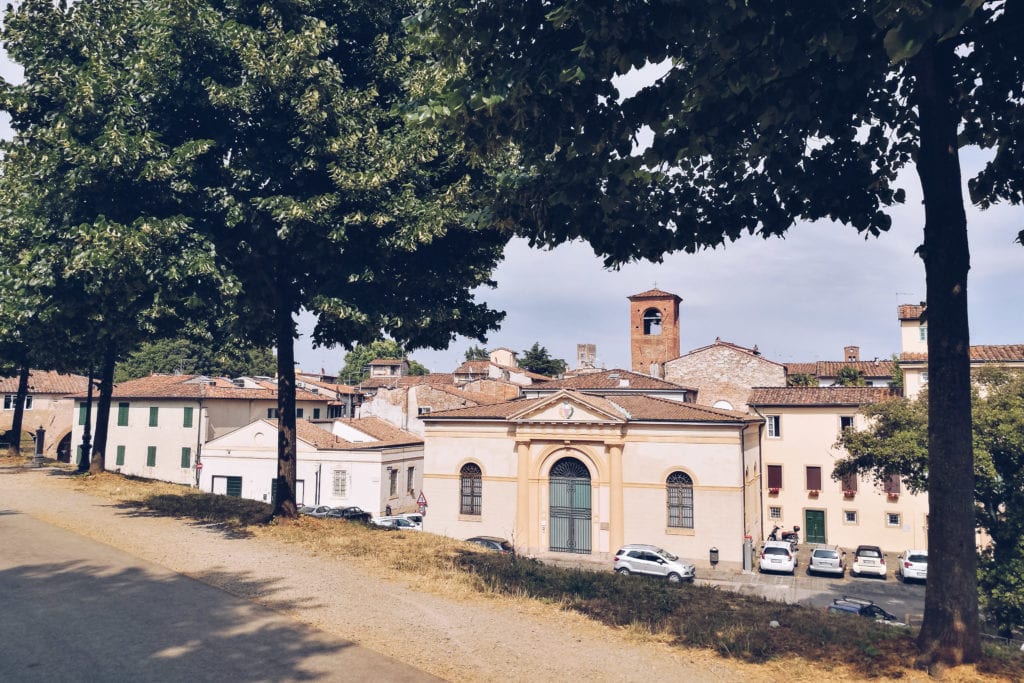
The walls of Lucca in brief
Without the city walls, and other reasons I tell you later, Lucca would not exist as we see it today. The walls of Lucca are the second in Europe for length. With its 4,2 km/2,60 miles, they are just behind the walls of Nicosia, Cyprus’s capital city.
Lucca’s city walls have eleven bastions, six main entrance gates, and other three more ancient gates. In addition, there are some secondary doors that people use to get out of the historical center.
Four Different walls surround Lucca
Throughout its history, four different walls were built in Lucca. The Romans founded Lucca 2000 years ago, in 180 BC, and they built the first fortification. It lasted until 1118. When Lucca became a Comune a second set of walls was built integrating the Roman old ones. During 1300, Lucca became bigger and they needed to better enclose and defend the city from the enemies. So they decided to build a third set of walls. Instead, the wonderful fascinating huge walls we see today are of Renaissance origin. The construction began in 1504 after more than a hundred years.
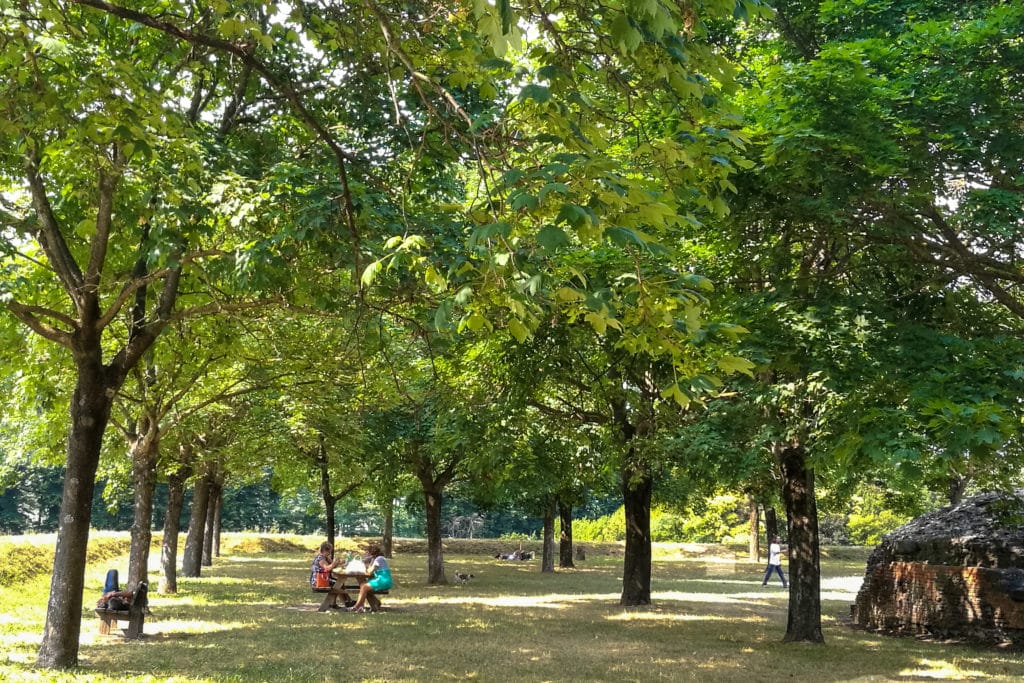
Medieval and Renaissance Walls
It was very interesting to listen to the differences between the Medieval and Renaissance walls. I never thought that could be a difference between them. The way of making war changed at the end of 1400 beginning of 1500, with the invention of gunpowder. Earlier, walls had to be very high, and not too much wide. They needed to prevent any attempt at climbing and to neutralize the use of bows and arrows.
If you’re a Game of Thrones fan, let your imagination run wild. Imagine a kind of Wall of Winterfell but, instead of being made of ice, was made of stones.
Differently, with the introduction of cannons in war, castles, and cities needed larger but not very high walls. They had to make walls of bricks and filled with soil, to resist the cannon shots.
The Walls of Lucca are an Odd Stuff
Lucca’s defensive walls had also another oddity I discovered thanks to this guided tour. Generally, the fortified cities had four main entrances, one for each cardinal point. Instead, in Lucca, there were only three gates: northern, western, and southern. Can you guess why? Because at East there was Florence, Lucca’s enemy no. 1.
The Florentines tried to conquer it for centuries with no success. This action had a symbolic and challenging meaning. Lucca was proudly an independent city and its people would have defended their city with all its strength from the attacks of Firenze and of the Medici Family.
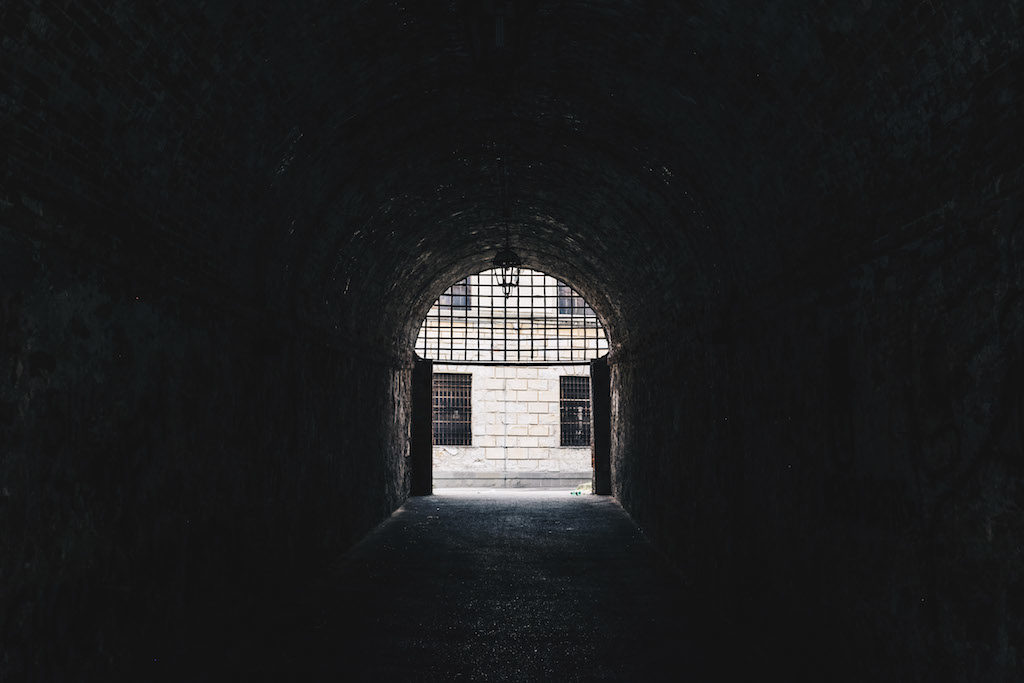
Lucca and the silk Trade
You have to know that Lucca was one of the most famous producers of silk in the Western world from the end of the 12th century. Vendors from all over the world came to Lucca to sell their products and buy precious textiles. Lampas, fabrics decorated with birds and animal patterns, brocades with golden and silver thread enrichments. Thanks to this trade Lucca became a rich city.
Moreover, its good diplomacy established profitable relationships with the Pope and the most powerful European Families, to stay out of any war.
Therefore, Lucca was an independent city for more than 700 years, and the only person able to conquer it was Napoleon during the French First Empire. It is under Napoleon’s control that they built the fourth eastern gate. It took the name Porta Elisa in honor of Elisa, sister of Napoleon, Grand Duchess of Tuscany, Princess of Lucca and Piombino, Duchess of Massa, and Princess of Carrara.
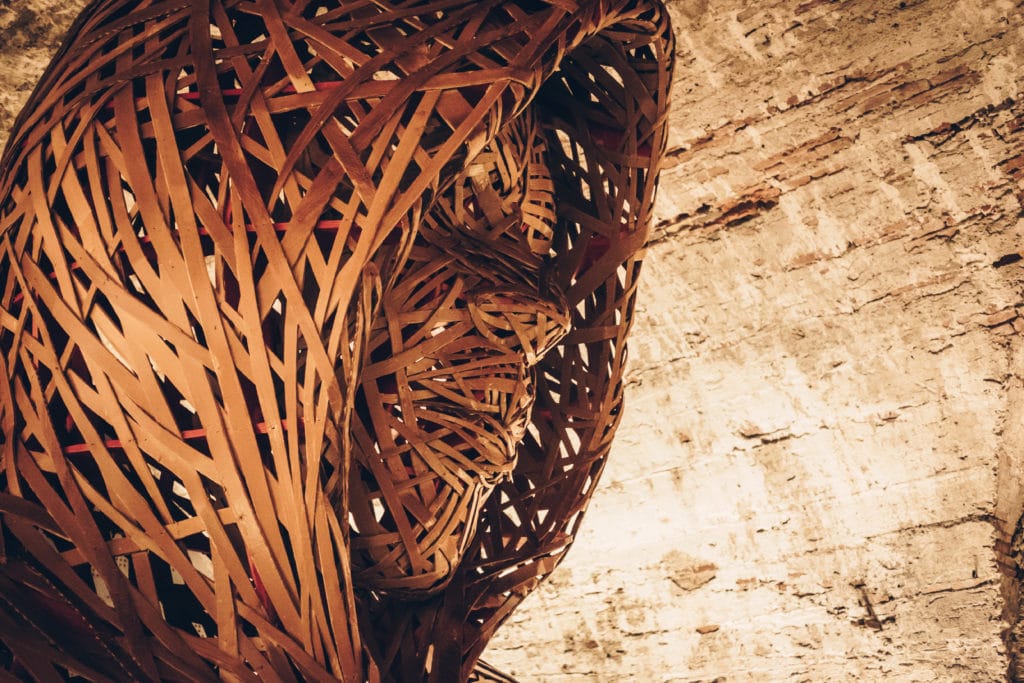
Later, they also built other minor gates to ease access and the exit from/to the old center. The city walls, its important role in the silk market, its wealth, the highly capable diplomacy, and last, the luck of not having been bombed during the big wars of 1900, are the key factors that allowed Lucca to preserve the splendor that we still admire.
The tour of the Walls of Lucca and its underground
First of all, we have to clarify that only bastions have undergrounds. While the straight walls are full because they needed to resist to the cannon shots. Thus, the walking tour of the underground led us along an itinerary that passed over the walls and inside the bastions of San Paolino, Santa Croce, and San Martino.
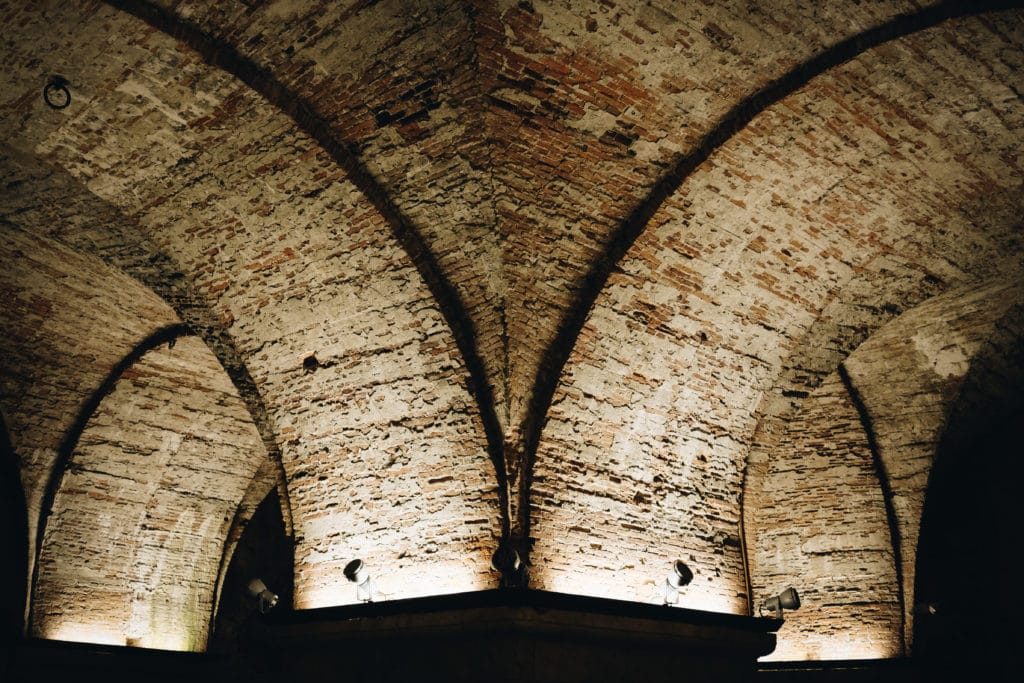
The bastion of San Paolino
The first stop of the tour was in front of the old building of the Ex Manifattura Tabacchi, an old factory of tobacco operating since the middle of the 19th century that now moved out of the city. Then, we proceeded to the first bastion of San Paolino which has been recently renovated preserving the original structure. Today the underground houses special events and exhibits (if the humidity level is not too high), and there is also an exit path to get out of the walls. Along the corridor, it was still possible (at the time of the visit) to admire two artworks made on paper and wood from the last event called Cartasia every two years takes place in town.
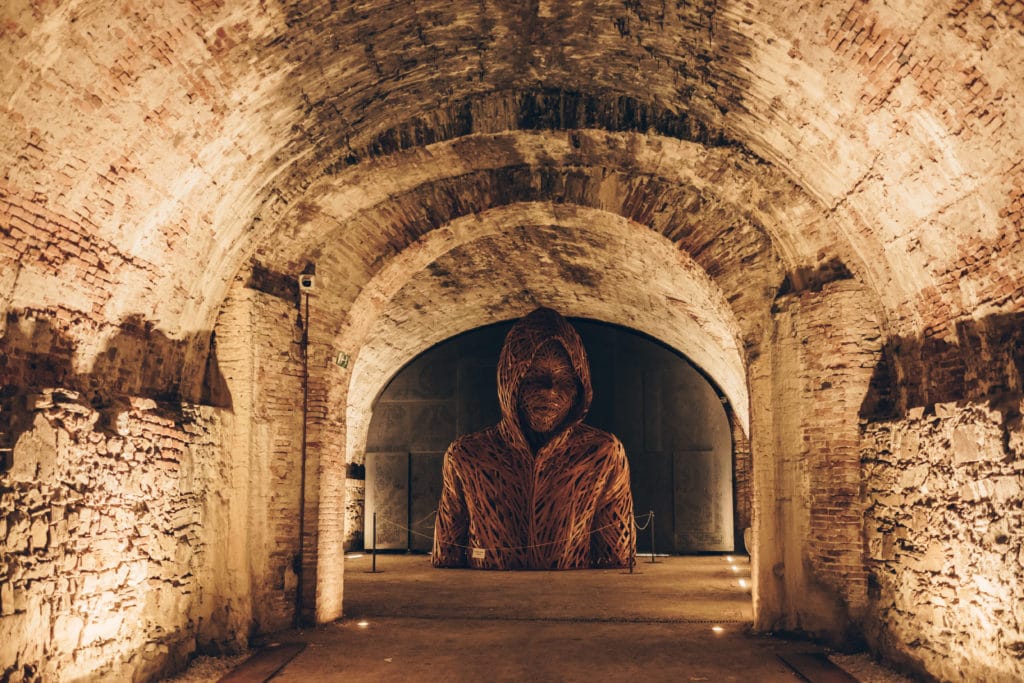
The bastion of San Donato
Different from the others, the bastion of San Donato has not underground. You find it between Porta Sant’ Anna and Porta San Donato. This bastion has always been unsafe because built over a patch of swampy ground. Adjoined to the bastion there is an old barrack, the old horse stables, and the ruins of the old walls further in.
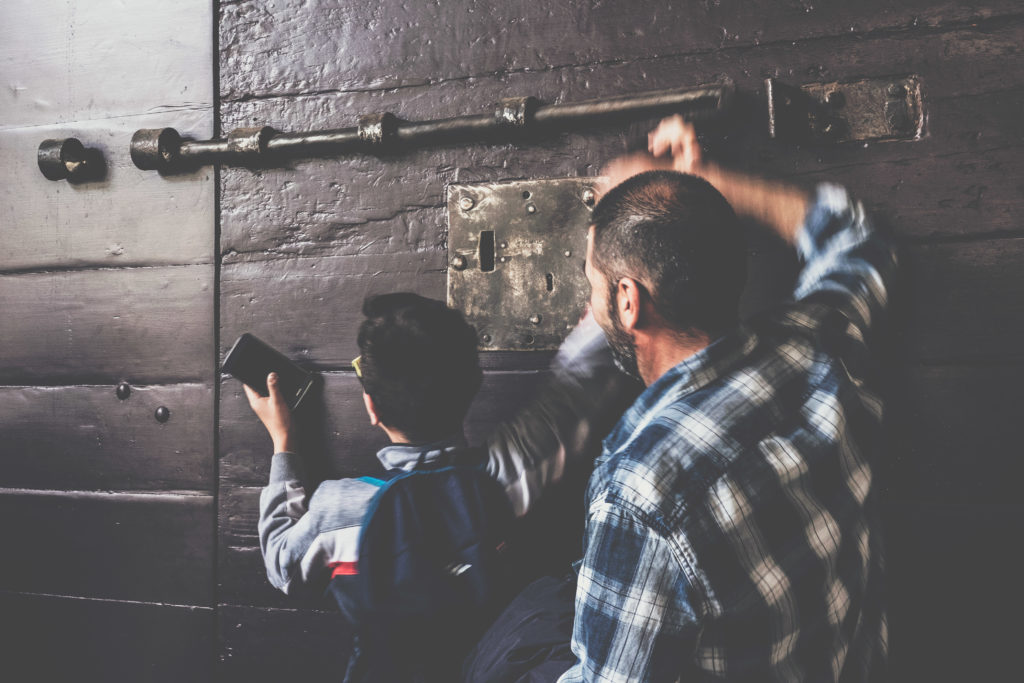
The bastion of Santa Croce
The next underground we explored was the bastion of Santa Croce. The bastion of Santa Croce is dedicated to the Holy Face, the venerated wooden crucifix hosted in the cathedral of San Martino that is also one of the patrons of Lucca. On the outside, the bastion is wide, very green, and bright, and gives some nice panoramic glimpses of the towers and roofs of the town. It is well preserved and we can still see the ruins of the medieval walls and the old soldier barrack.
It was interesting to go under and visit the undergrounds that are open to the public only during special events. During the Second World War, this space was used as a shelter for civilians, and we can still see the rest of the foundations of the old medieval fortifications that during the Renaissance were merged with the modern city walls.
Santa Croce Bastion is definitely my favorite, and I came back a few days later to enjoy the view and rest on the grass under the shadow of its trees. I discovered that the old barrack of the bastion years ago was an office of the Carabinieri Corps. Today it hosts a studio of painting. This is a good example of requalification which also allows local people to live in an important old building of the history of the town.
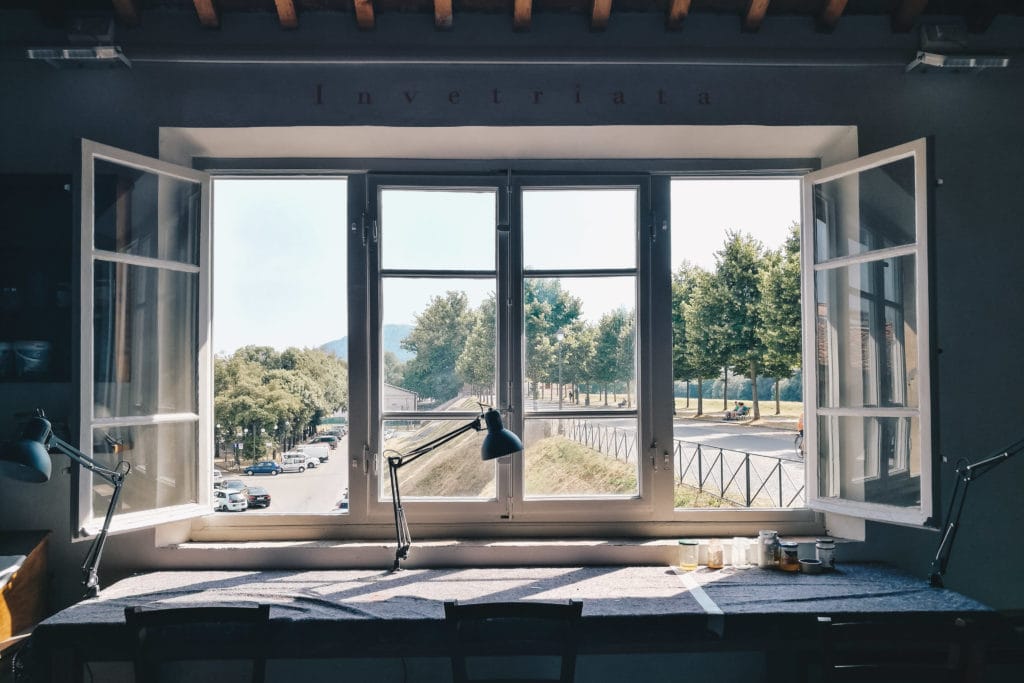
The Bastion of San Martino
The last stop of the tour of the walls of Lucca and its underground was the Bastion of San Martino along the northern side of the fortification. On the way to the Bastion, we took a little shortcut passing in front of the wonderful Italian gardens of Palazzo Pfanner, and to the church of San Frediano. The uniqueness of this church is that the façade has an unusual orientation to Jerusalem, while most of the church has the altar pointed toward the west.
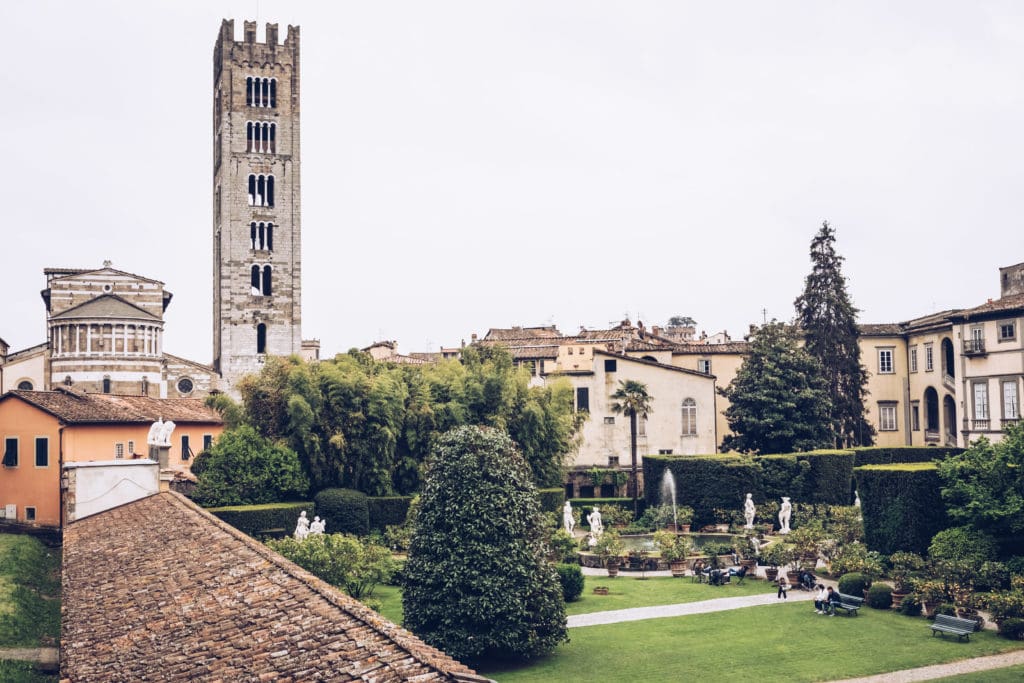
The entrance at the bastion of San Martino is free. It works also as a secondary gate to get out of downtown. The restorations dug up the rest of the octagonal tower dated back to 1300. At the gate, a huge robot statue made of paper welcomes visitors. Inside we still find old arches made of bricks that light games make them even more fascinating. You can also look out for the embrasures used for defending the walls with cannons. The most powerful cannons (that could shoot up to 4 km away) were on top of the walls while from these windows cannons shot stones, nails, and iron scraps.
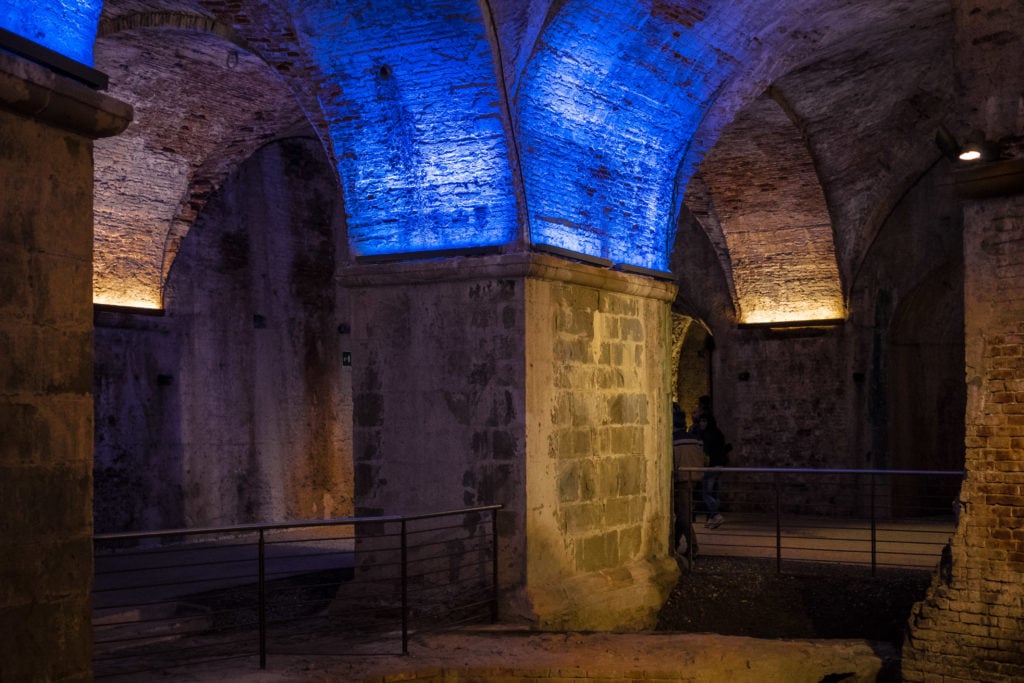
Chet Baker and Lucca
Walking along the walls we passed next to the current city prison and there is a touching story to tell. In 1960, one of the world’s greatest jazz trumpeters Chet Baker spent sixteenth months here in jail.
Baker was a poète maudit. He was playing and singing like an angel without knowing music like a talented autodidact. He was fond of the town of Lucca, where he had good friends. And with the coastal area of Versilia too. It is in the summer of 1960 that he was arrested for drug trafficking while on tour playing in some of the best clubs in Versilia. During his imprisonment, he got permission to play his trumpet, so every day a crowd met up in front of the prison to listen to his wonderful melodies.
Also, in December of the same year, another great jazz clarinetist, Henghel Gualdi faced the law organizing, along this part of walls, an improvised and moving concert as a Christmas gift for Chet.
The tour ended up in San Martino after two hours that passed very quickly. You can walk most of this itinerary of the walls of Lucca by yourself. But if you wish to enrich your experience with interesting information and anecdotes about the history of the town, as I personally do, I highly recommend you to join this special tour of the underground with one of the TurisLucca authorized tourist guides.
Pin It for Later!
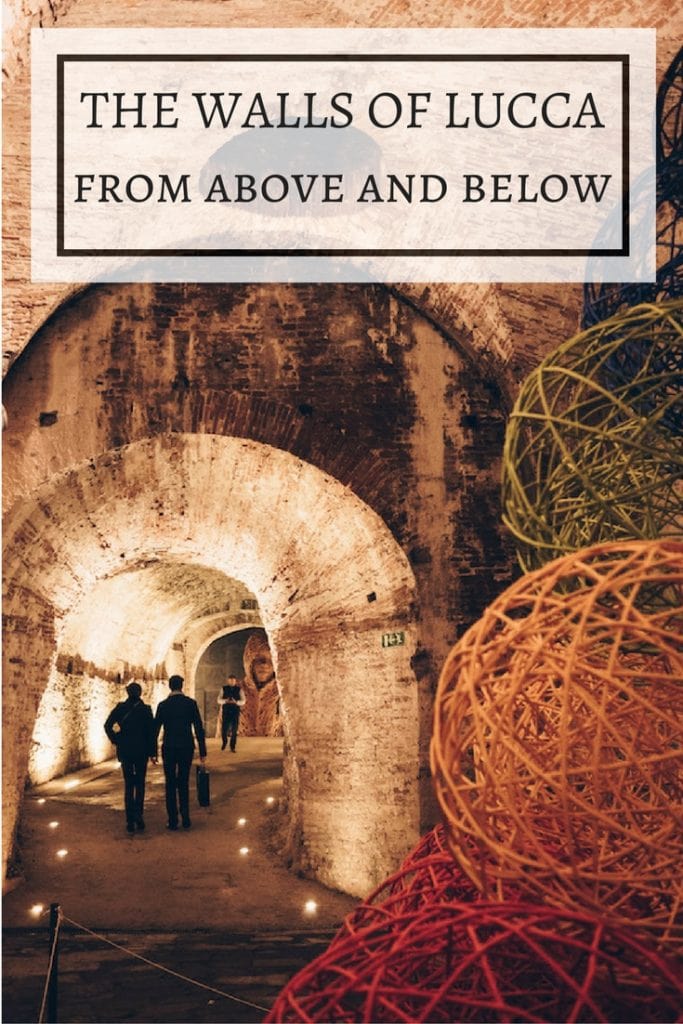

Really loved the masked photo
Tks Roy! 🙂
Interesting story! Now I’m going to research more about this place! And by the way, I like you website in general!! 🙂 Another bookmarked site for me, for future reference! 🙂 Keep it up!
Many thanks Jena for the compliments. it is always great to receive them. Keep reading us then.
Wow! The views from above and below are extraordinary- you can tell that Lucca holds so much history. It’s no wonder that it was such an enjoyable experience.
Lucca has so much history to tell…and it is very well preserved. a good experience for visitors. 🙂
Lucca is a marvel! We spent a whole day roaming the town and loved those massive walls. But we missed going underground…should have done that too..
You have a reason to come back. 🙂 all occasions for us are good to go to Lucca. 🙂